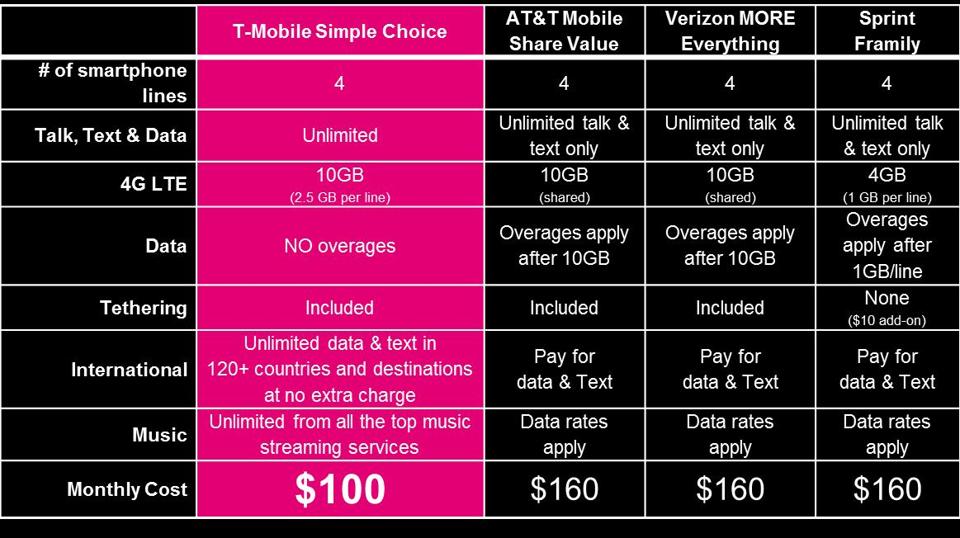-
Posts
7,278 -
Joined
-
Last visited
-
Days Won
2,416
Content Type
Forums
Blogs
Events
Articles
Resources
Downloads
Gallery
Store
Everything posted by allheart55 Cindy E
-
-
-
-
-
One Android feature that never made its way to iOS may be the cause of one of the most worrying security exploits ever on the mobile platform. AppleInsider reports that Bluebox Security has found an Android design flaw that could potentially allow malware apps to take over someone’s device without requiring users to manually give the app permission to access their phones. Dubbed ‘Fake ID,’ the flaw allows the malicious apps to send fake credentials to Android, granting the app the ability to take on the form of another legitimate app that would have more extensive access to the device. Perhaps unsurprisingly, one of the trusted apps that ‘Fake ID’ can assume the identity of is Adobe Flash, an Android-specific feature that Steve Jobs refused to include in iOS for this very reason. Although Google ditched Flash for Android a few years ago, the software was so deeply ingrained in the platform that a residual flaw remained in the Android WebView until the release of Android 4.4 KitKat. Unfortunately, only 18% of Android users have installed KitKat, which leaves 82% of the Android population vulnerable to ‘Fake ID’ through Flash. Of course, Flash isn’t the only victim — Google Wallet can be exploited as well, putting users’ financial data at risk. According to Bluebox, “other devices and applications that depend upon the presence of specific signatures to authenticate an application may also be vulnerable. Essentially anything that relies on verified signature chains of an Android application is undermined by this vulnerability.”
-
Facebook may want to look up the phrase, “If it ain’t broke, don’t fix it.” TechCrunch reports that Facebook plans to take away the messaging feature from its core app and force users to download the separate Facebook Messenger app if they want to chat with their friends. Facebook has apparently been testing out using Messenger as its sole messaging app in Europe and has been encouraged by the results so far, TechCrunch says. TechCrunch says that the good news is that “mobile web, iPad, feature phone, Windows Phone, Paper, and desktop users can still message in their main Facebook apps or sites” for the time being and won’t be forced to use a separate app. WhatsApp users should also be happy with the move because if Facebook has enough confidence in its own messaging app, it won’t need to encroach into WhatsApp’s territory by integrating itself more tightly into the platform. Facebook has apparently decided to do this because people who use the Messenger app reply around 20% faster than people who use the main Facebook app. The company also thinks that it can make its mothership app better by not having to worry about supporting instant messaging on it. Facebook has already started notifying iOS and Android users about the change, so don’t be surprised to see an unexpected notification the next time you try to message friends via your Facebook app.
-
Microsoft attempted something different and daring with Windows 8. It introduced a whole new interface and means of interaction with your PC that was identical to a smartphone or tablet. It threw out the “Start” menu and mouse-driven interface people had used for decades in favor of a touch-driven interface with tiles, some of which received active information updates. And people hated it. “They tried to get their entire audience to jump from a UI [user interface] they were comfortable with to a brand new one with a serious learning curve,” California-based Creative Strategies tech analyst and president Tim Bajarin said. “Had they done a more transitionary product, especially keeping the Start button, I don’t think the impact and perception would have been as bad.” By removing the Start button, which had been a Windows fixture since Windows 95, Microsoft wasn’t just introducing a new way of using the operating system — it was trying to force people away from the only one they had known for two decades. The result was that Windows 8 was slaughtered in the court of public opinion, often compared to the much-maligned Windows Vista released in 2006. It was an incorrect comparison; Vista was a technological hairball, a truly awful piece of software that often failed when people tried to install it on their PCs. Windows 8 was technically sound. No one complained of crashing, slow performance or old apps not working on it. People noted it was actually a tad faster than Windows 7, they just hated how it looked. The result was slow sales for Windows 8, but Windows 7, the OS it was supposed to replace, kept selling like hotcakes. “Its distinguishing feature was support for touchscreens but also legacy applications,” Endpoint Technologies President Roger Kay said. Endpoint is a Boston-based market research firm. “It ended up being a Frankenstein. So the good parts, like being a little faster and more reliable and more secure were almost totally invisible to the end user. So you could tell people it was faster and more reliable and they said ‘I don’t know how to use it.’” Kay said the beating Windows 8 took in the tech press hurt, but users also hated it. Microsoft released a public beta for anyone to download and use on February 29, 2012, and released the product in October, 2012. During that time, in all the public Windows forums, “consumers were gnashing their teeth and stomping their feet about it. It was vilified in public forums,” Kay said. The old guard who came up with Windows 8 and refused to listen to beta testers are gone and Microsoft has more or less given up trying to rescue its slandered OS. There will be another significant update to Windows 8.1 (called Update 2) later this year. After that, the new management are focusing their efforts on Windows 9. Windows 9, which Microsoft internally calls “Threshold,” should ship around the second quarter of 2015. It will put the Windows 8 interface on the back burner but not throw it out, since applications written for Windows 8 would be broken. The familiar desktop with the Start button will be back. Bajarin expects Windows 9 will return all of the familiar elements of Windows 7 and prior operating systems, with the new UI relegated to the back burner while new features are added to bring people forward. “I don’t think it will be radical at all,” Bajarin said. ”I think they will make it easier to work with user interfaces of the past and provide better transition for those with older operating systems to come into this era.” That could include tighter cloud services integration. One feature widely rumored but not confirmed by Microsoft is that it will offer seamless, tight cloud integration into the OS. Your OneDrive storage will be as easy to access as the “C: drive,” so all of your documents, personal files, photos, etc. will go right to the cloud without having to think about it. Apps might also be potentially stored in the cloud as well. Say you log on to another Windows 9 PC using your login and password –not only will your data files be accessible from your cloud storage, but also the apps you use. Kay expects more cloud-oriented features as well. “It would be good to move to a cloud-oriented OS to do updates more frequently and keep the OS alive,” Kay said. “That way you would check in to the cloud at login but run locally, so you could work anywhere.” He also doesn’t expect Windows 9 to be a major departure from the operating systems of old. “You’d expect them to do more in order to justify all of the effort of creating a new OS other than fixing the old one. There will be a lot of it will be bells and whistles, but a lot of that stuff tends to fall into Who-Cares? territory,” Kay said. Another rumored addition to Windows 9 is Cortana — the digital voice assistant currently being rolled out to Windows Phone users. Cortana is like the iPhone’s Siri: ask it a question and it fetches the proper contextual answer. Microsoft has made comments in recent weeks about bringing Cortana to Windows PCs, and Windows 9 would be the most logical candidate to get its own answer to J.A.R.V.I.S. At this point, it’s all speculation, but one thing is for certain: Microsoft needs to get Windows 9 right. Kay noted that Microsoft has had only one good operating system in its last three releases over the last eight years. Windows 7 (2009) was good, while Vista (2006) and Windows 8 (2012) were bad. “Those are not good odds for software. Maybe for blackjack, but not operating systems. I would love for [Windows 9] to work great and do the right thing, but they are one for three in recent releases. So I’m a bit cynical,” Kay said. http://news.yahoo.com/windows-8-died-launch-microsoft-moves-windows-9-231606647.html
-
I'm going to contact T-Mobile this week and see what type of deal they are willing to give me. I haven't been under contract with them for 26 months now and I've been with them faithfully since '98. Since I am free to go with another carrier if I choose, I'll see what their customer retention program has to offer.
-
I have been using strictly AMD's for the past four years since Rich got me hooked on them. (Even after he went back to Intel) My last build for my (personal use) was an AMD FX-8150 Zambezi 8 core. I have to admit, I didn't see that much difference between that and my AMD FX-6100.
-

Seasonic 660 Watt Psu-$79.99
allheart55 Cindy E replied to Rich-M's topic in Tech Help and Discussions
You usually ask less for your builds than I do. -

Seasonic 660 Watt Psu-$79.99
allheart55 Cindy E replied to Rich-M's topic in Tech Help and Discussions
Rich always finds great deals. I don't know how he does it. -
UPDATE: Brad Molen has spotted some fine print for the new T-Mobile plan — apparently it will only offer 10GB of data for the first 16 months, after which it will go down to 4GB per month, much like Sprint’s “Framily” plan. That said, this still looks like a better deal at $100 per month, even if the 10GB monthly allotment only lasts for a year and four months.
-
Anything Sprint tries to do, T-Mobile is determined to try to do better. T-Mobile on Monday unveiled a new family plan that will cost $100 per month for four separate lines and offer a total of 10GB of LTE data, or 2.5GB per line. In contrast, Sprint’s most comparable “Framily” plan costs $160 per month and offers a mere 4GB of data total, or 1GB per line. You can get an unlimited-data Sprint “Framily” plan, of course, but it will cost a total of $240 per month since the unlimited option costs an extra $20 per line. The T-Mobile plan also looks pretty good when compared to similar plans from AT&T and Verizon — both of those carriers will give you 10GB of data total for four lines but they’ll charge you $160 per month for it. The one big caveat to the T-Mobile plan is that while Verizon and AT&T let you share your data across all your lines as you see fit, T-Mobile is restricting it to 2.5GB per line, meaning that if you go over 2.5GB on your line you’ll get throttled down to slower speeds even if others on your plan are well under their 2.5GB thresholds. All the same, T-Mobile won’t charge you overage fees for exceeding your data caps so this plan really does seem like a sweet deal no matter how you slice it. Be sure to check out T-Mobile’s chart comparing deals across different carriers below.
-

MBAM bad update quarantines system files
allheart55 Cindy E replied to starbuck's topic in Tech Help and Discussions
This is the first time I have had any problems with the Premium version and I have been using it since it came out. -
-
-
-
-












